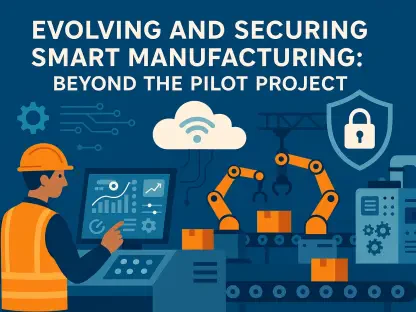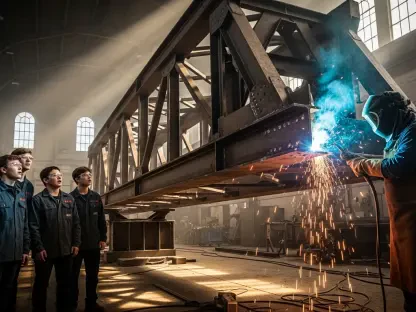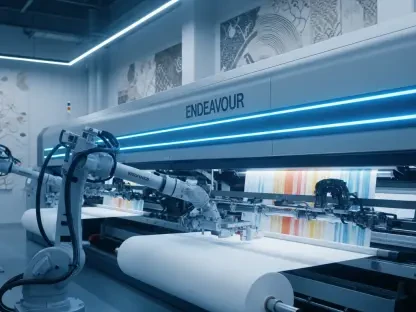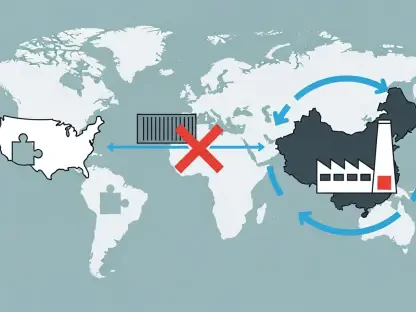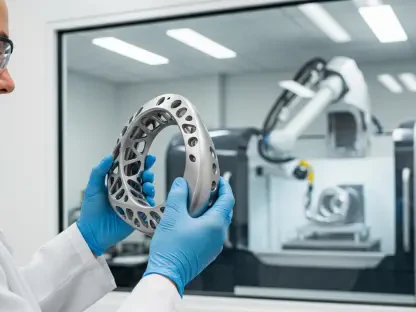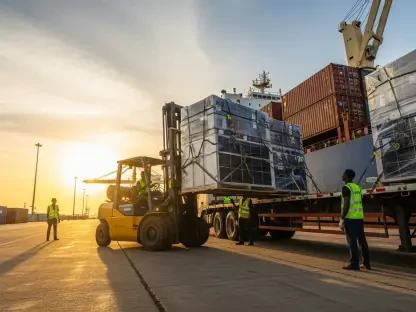As the world stands on the brink of a technological transformation, few voices are as insightful as that of Kwame Zaire, a manufacturing expert with a deep focus on electronics, equipment, and production management. With his thought leadership in predictive maintenance, quality, and safety, Kwame brings a unique perspective to the intersection of artificial intelligence (AI) and industrial progress. In this interview, we explore the ambitious AI Action Plan recently unveiled by the Trump Administration, the unprecedented energy demands of AI-driven data centers, the strain on the electric grid, and the environmental and economic implications of this so-called “golden age of America.” Join us as we dive into how AI could reshape industries, challenge infrastructure, and redefine sustainability.
How do you see the Trump Administration’s AI Action Plan, released in July 2025, shaping the future of American innovation?
The AI Action Plan is a bold step toward positioning the U.S. as a global leader in artificial intelligence. It’s rooted in a vision of national strength, emphasizing American workers, energy, and technology as the backbone of what President Trump calls a “golden age.” From my perspective in manufacturing, this plan signals a commitment to integrating AI across industries, which could streamline production processes, enhance equipment efficiency, and reduce downtime through predictive maintenance. It’s not just about tech for tech’s sake—it’s about rebuilding industrial might with smarter tools. However, the plan’s success hinges on execution, especially in addressing the massive infrastructure needs it introduces.
What’s your take on the idea that AI could spark an industrial revolution, an information revolution, and a renaissance all at once?
I think this vision captures the transformative potential of AI on multiple levels. In manufacturing, for instance, AI can revolutionize how we design, produce, and maintain equipment—think automated quality control or real-time fault detection. That’s the industrial piece. The information revolution comes from how AI processes vast data sets, enabling better decision-making across sectors. The renaissance aspect, I believe, points to a cultural and creative shift—AI could inspire new ways of problem-solving and innovation. But we must temper this optimism with caution. Such sweeping change brings risks like workforce displacement or over-reliance on tech, and we need strategies to manage those challenges.
Why are hundreds of new data centers so critical to advancing AI, and what does this mean for industries like manufacturing?
Data centers are the engine rooms of AI. They provide the computational power needed for complex algorithms, machine learning models, and data processing—essentially, the heavy lifting behind AI’s capabilities. For manufacturing, this means we can leverage AI for real-time analytics, optimizing supply chains, or predicting equipment failures before they happen. But building hundreds of these facilities, as the plan suggests, is a massive undertaking. They’re not just buildings; they’re power-hungry beasts that require robust infrastructure, and that’s where the challenge lies for industries relying on stable energy to keep operations running smoothly.
With projections of over 1,300 new data centers in North America by 2026, how do you see this impacting energy demands?
The numbers are staggering—1,357 data centers by 2026, requiring around 64 gigawatts of power, enough to light up millions of homes. In practical terms, this means a dramatic spike in electricity consumption. Data centers run 24/7, powering servers, cooling systems, and more. For context, a single large data center can use as much energy as a small city. This surge will test our grid’s capacity and push us to rethink energy production and distribution. Without careful planning, industries like manufacturing could face higher costs or even power shortages, which would disrupt production lines.
There’s a big debate about who should pay for the energy upgrades these data centers require. What’s your perspective on this?
It’s a tough question with no easy answer. On one hand, big tech companies driving AI development stand to profit immensely, so it makes sense they should bear a significant portion of the cost for new power infrastructure. On the other hand, utilities and governments have historically shared the burden of grid improvements because they benefit society as a whole. I think a hybrid model is needed—tech giants should invest heavily, but federal or state support could ensure smaller businesses and homeowners aren’t unfairly burdened with rate hikes. Transparency in these negotiations will be key to avoiding a situation where regular ratepayers foot the bill.
How serious is the strain on the electric grid from these data centers, and what kind of solutions might help?
The strain is very real. Our current grid wasn’t built for the concentrated, high-intensity demand that data centers create. We’re talking about needing major upgrades—new transmission lines, substations, and generating capacity. Solutions could include prioritizing energy-efficient designs in data centers, like advanced cooling systems, and fast-tracking grid modernization projects. I also think we need to diversify energy sources. Relying solely on traditional power won’t cut it; integrating more stable options, even if not fully renewable yet, could help balance the load and prevent outages.
Given the environmental concerns tied to powering data centers, how do you think this aligns with broader climate goals?
There’s a clear tension here. Data centers will drive up energy use, and if that demand is met with fossil fuels, it’s a setback for climate goals. The industry estimates needing up to 153 gigawatts of new capacity by 2030, which could mean more greenhouse gas emissions unless we pivot to cleaner sources. Geothermal energy, highlighted in the AI Action Plan, shows promise in the near term compared to fusion or small modular reactors, which are decades away. But without incentives for renewables—especially under policies skeptical of climate initiatives—we risk undermining sustainability. It’s a balancing act between tech progress and environmental responsibility.
Water usage for cooling data centers is another growing issue. How do you see this playing out, especially in water-stressed regions?
Water is often overlooked in these discussions, but it’s critical. Large data centers can guzzle millions of gallons daily for cooling, especially with evaporative systems. In arid regions like the Southwest, where water is already scarce, this pits tech needs against agriculture and urban demands. I think we’ll see more innovation in air-cooling technologies or closed-loop water systems to reduce consumption. But location matters—building data centers in water-abundant areas or near natural cooling sources could mitigate some of these conflicts. It’s an area where policy and industry need to align quickly.
What role do you think advanced energy sources like geothermal or nuclear could play in meeting AI’s power needs?
Advanced energy sources are exciting but come with caveats. Geothermal, for instance, is viable now in certain regions—think places like Northern California with natural heat reservoirs. It could provide a steady, low-carbon power supply for data centers if scaled up, and the Department of Energy’s goal of 5 gigawatts by 2030 is a start. Nuclear options, whether fission with small modular reactors or fusion, are further out. They face technical, financial, and regulatory hurdles, so they’re not immediate solutions. For now, geothermal offers the most realistic path among these, but it won’t cover all needs without broader energy mix strategies.
What is your forecast for the balance between AI-driven growth and the challenges of energy and environmental sustainability in the coming decade?
I’m cautiously optimistic. AI has the potential to drive unprecedented growth—reshaping industries, boosting efficiency, and solving complex problems. But the energy and environmental hurdles are daunting. Over the next decade, I foresee a rocky transition period where grid strain and resource conflicts, like water usage, will create bottlenecks. Success depends on collaboration—tech companies, utilities, and governments must share responsibility for infrastructure costs and prioritize efficiency. If we can integrate even a modest share of cleaner energy while modernizing the grid, we might strike a balance. But without proactive policy and investment, the promise of this “golden age” could be overshadowed by practical limitations.


